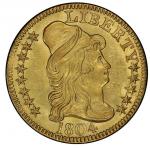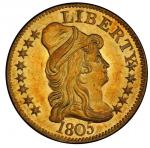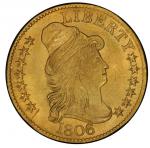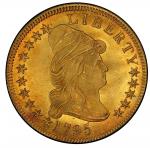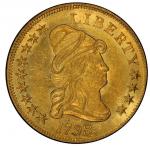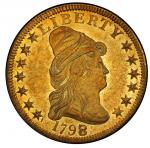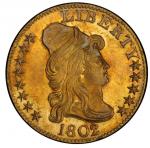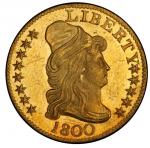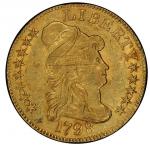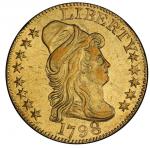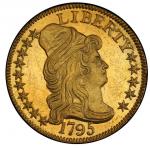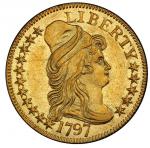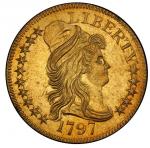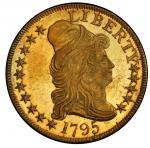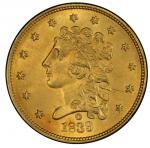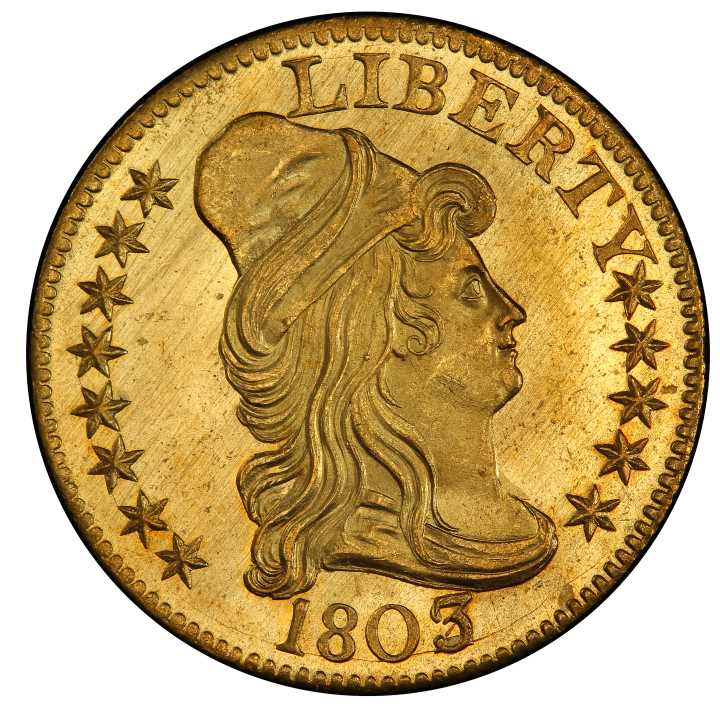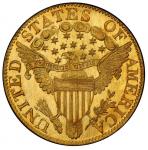A noted gambler of the name Greenlaugh passed through this place yesterday … it is believed he has in his possession now, a large quantity of bank notes, and coins of the eagle and half-eagle, which are counterfeit. It is his custom to be armed with pistols and dirk. -- The Evening Post, New York City, August 18, 1803.This is not only one of the most visually exciting coins in the entire D. Brent Pogue Collection of Draped Bust half eagles, but it is likely the very finest example of this early type known. It is a coin of nearly mystical quality, a talisman from the Jefferson Administration that has magically transported as-coined lustrous surfaces and flash from two centuries ago, seen anew in the present day like light from a supernova millions of light years away. The fields are fresh and bright, witnesses to only the most minor handling, most of it likely before this coin ever left the mint. The most trivial lines and contact points are found with a glass, not to be confused with the fine lines left from planchet preparation that run southwest to northeast on the obverse, nearly vertical on the reverse. Only the most minute distractions have found a home on the obverse, including a microscopic nick near Libertys jawline, a short line right of stars 1 and 2, and a short abrasion above the right side of 8 in the date. The reverse is immaculate and abundantly detailed, so well struck that each feather on the eagles chest is fully detailed. A few tiny natural planchet chips or depressions are seen, including one outside star 11 and another attached to a denticle at the tip of the bust. The world-class visual appeal is as exceptional as it is unexpected on a coin of this type, with both sides presenting the look of a coin just made, finely struck and given a wealth of detail before being dropped, still warm, into the viewers hand.The portrait device punch of Liberty shows some rust, most visible on her forelock and immediately above the lock of hair that sweeps across her cap. Efforts at the Mint to remove the rust (or, alternatively, clashing) have left a bright reflective hollow spot among her lower curls. Some die cracks are also seen, including a delicate one that connects stars 2 through 5 at their outer points, and similarly fine cracks that connect LIB at their top and TY to star 9. The most notable obverse crack is bold across the bottom of the date, extending from a whisper-thin line from the outer point of star 1 on an arc across the bases of each date digit to the rim beneath star 13. The overdate is easily evident to the naked eye, leaving no mystery as to the nature of the underdigit. Slight die clashing is visible on both sides, mostly lapped away but still visible at the rounded juncture of Libertys bustline and neck and on the reverse among the star cluster. The repair to the surface of the reverse die after the clashing has left the cloud under A of STATES polished away, as with some detail in the wing at left above L of PLURIBUS. Like the obverse, the reverse is boldly cracked, from the rim beyond the eagles wingtip at left, through that wing and across the top of the shield, first diagonally, then horizontally, continuing horizontally across the central reverse and through the E of AMERICA. This total bisection is equivalent to Bass-Dannreuther reverse state c, which remarkably remains static through this reverse dies use in four more die marriages dated 1804. The obverse die, seen here in state c, later loses a piece under the date before being condemned to the scrap heap.The single finest half eagle of this type known to exist, this coin was a sensation when it appeared on the market following decades in the collection of Michigan connoisseur Andrew Sydlak. Sydlaks tastes echoed those of Mr. Pogue, acquiring the finest quality coins with little regard for price. While such an attitude prompted criticism in the 1950s, when gems traded at modest premiums to the prices of more typical Mint State coins, Sydlaks uncompromising demand for the best has been vindicated in modern times. The only challenge in owning a coin so fine is finding other ones that match its quality.

